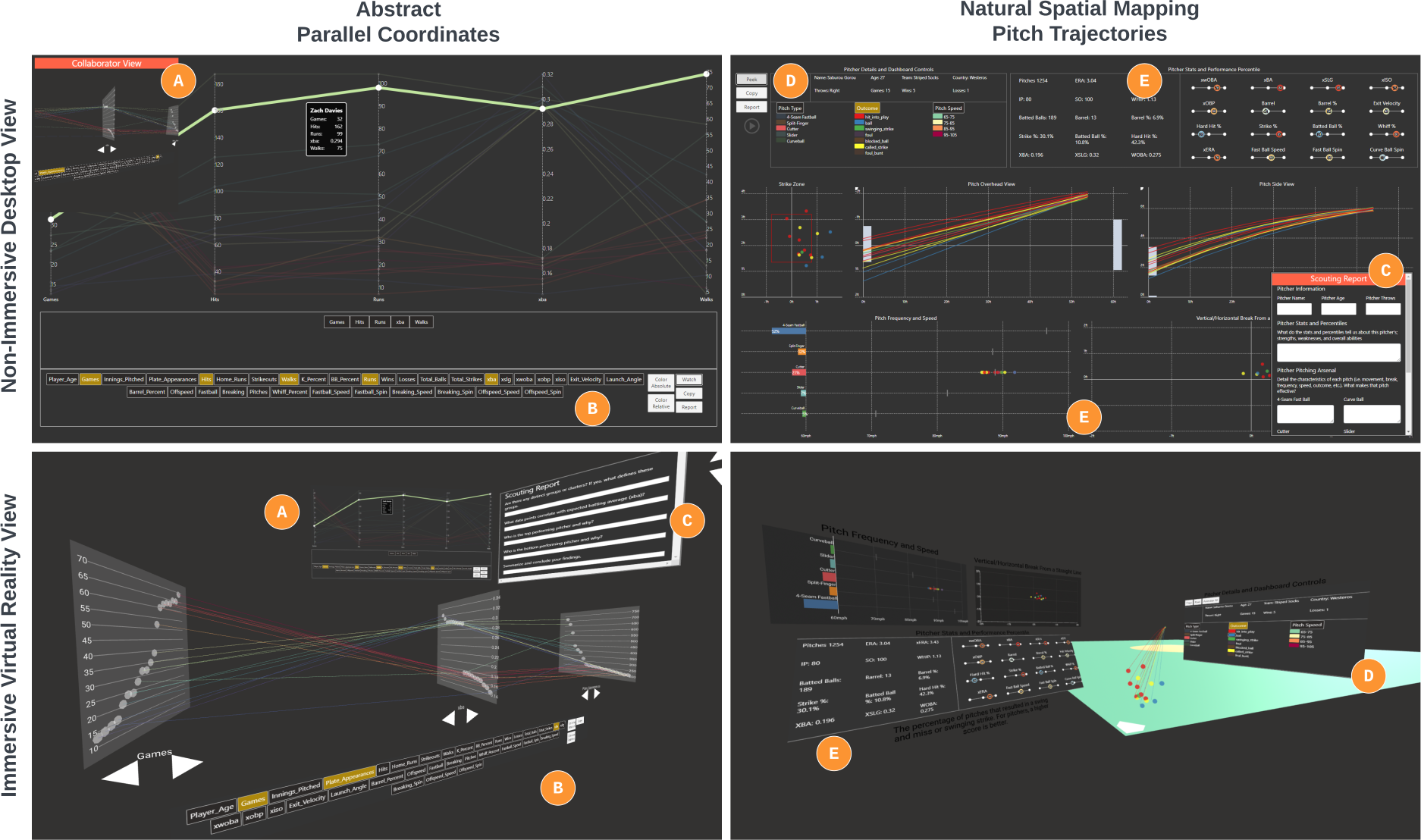Through their eyes and in their shoes: providing group awareness during collaboration across virtual reality and desktop platforms

Abstract
Many collaborative data analysis situations benefit from collaborators utilizing different platforms. However, maintaining group awareness between team members using diverging devices is difficult, not least because common ground diminishes. A person using head-mounted VR cannot physically see a user on a desktop computer even while co-located, and the desktop user cannot easily relate to the VR userś 3D workspace. To address this, we propose the ``eyes-and-shoes principles for group awareness and abstract them into four levels of techniques. Furthermore, we evaluate these principles with a qualitative user study of 6 participant pairs synchronously collaborating across distributed desktop and VR head-mounted devices. In this study, we vary the group awareness techniques between participants and explore two visualization contexts within participants. The results of this study indicate that the more visual metaphors and views of participants diverge, the greater the level of group awareness is needed. A copy of this paper, the study preregistration, and all supplemental materials required to reproduce the study are available on osf.io/wgprb.
Authors
Citation
Through their eyes and in their shoes: providing group awareness during collaboration across virtual reality and desktop platforms
David Saffo, Andrea Batch, Cody Dunne, and Niklas Elmqvist. Proc. CHI Conference on Human Factors in Computing Systems—CHI. 2023. DOI: 10.1145/3544548.3581093
PDF | Preprint | DOI | Supplement | Preregistration | BibTeX
Khoury Vis Lab — Northeastern University
* West Village H, Room 302, 440 Huntington Ave, Boston, MA 02115, USA
* 100 Fore Street, Portland, ME 04101, USA
* Carnegie Hall, 201, 5000 MacArthur Blvd, Oakland, CA 94613, USA


